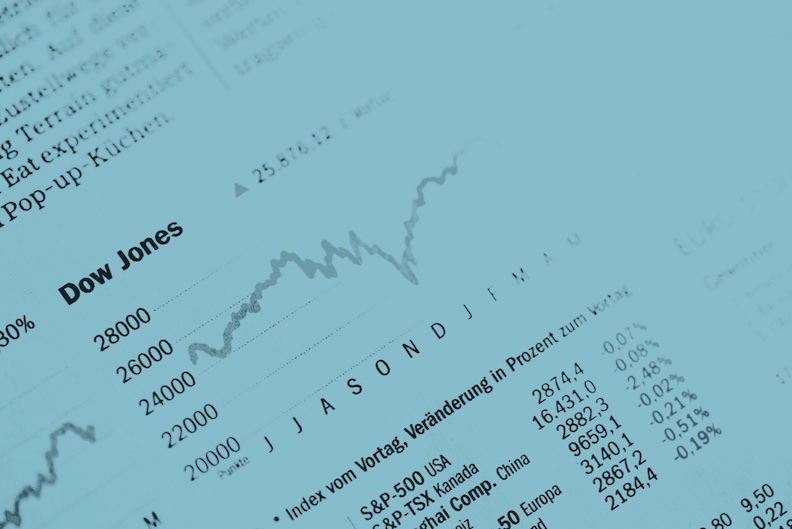What is it about?
This paper examines the causal relationship between electricity consumption and economic growth, focusing on India—a rapidly growing economy with rising energy demands. Ohlan uses econometric methods to test whether: Electricity consumption drives economic growth (growth hypothesis). Economic growth leads to higher electricity demand (conservation hypothesis). A bidirectional relationship exists (feedback hypothesis). No direct linkage exists (neutrality hypothesis). Methodology Ohlan employs: Time-series econometrics (e.g., unit root tests, cointegration analysis). Granger causality tests to determine directional relationships. Data sources: Likely India’s national accounts (GDP) and power sector reports (electricity consumption), spanning several decades. Key Findings Long-Run Cointegration Confirms a stable, long-term relationship between electricity use and GDP. Suggests energy policies can have lasting economic impacts. Granger Causality Direction Supports the "growth hypothesis" for India: Electricity consumption → Economic growth (Unidirectional causality). Increased power supply boosts productivity, industrial output, and services. Contrasts with developed economies (where growth often drives demand). Policy Implications Expanding electricity infrastructure (generation, grids) is critical for sustaining India’s growth. Energy conservation policies (e.g., demand-side management) must avoid harming economic activity. Renewable energy integration should align with growth needs. Why This Study Matters India’s Development Challenges ~240 million Indians lack reliable electricity access; shortages hinder growth. Study justifies investments in power sector reforms (e.g., Ujwal DISCOM Assurance Yojana [UDAY]). Global Energy-Growth Debates Contributes to the "energy-growth nexus" literature, showing variability by development stage. Contrasts with findings in OECD nations (where causality often reverses). Climate Policy Trade-offs Balancing decarbonization (via renewables) with growth needs is complex. Suggests India must prioritize energy efficiency alongside capacity expansion. Critiques & Limitations Regional disparities ignored: National-level data may mask state-wise differences (e.g., industrial Gujarat vs. agrarian Bihar). Sectoral breakdown absent: Agriculture (high electricity subsidies) vs. industry may have distinct causal links. External factors: Oil prices, technological shifts (solar power boom post-2018) could alter dynamics. Related Studies & Comparative Insights Country/Region Causality Finding Implications India (Ohlan, 2018) Electricity → Growth Expand supply cautiously USA (Kraft & Kraft, 1978) Growth → Electricity Conservation viable China (Yuan et al., 2008) Bidirectional Integrated policies needed Conclusion Ohlan’s study underscores electricity as a catalyst for India’s growth, urging policymakers to: Invest in reliable power supply (renewables + grid modernization). Avoid aggressive conservation that could stifle development. Address inequities in energy access to ensure inclusive growth. For further reading, access the full paper via Wiley Online Library. Would you like help finding similar studies on other emerging economies?
Featured Image

Photo by israel palacio on Unsplash
Why is it important?
Ramphul Ohlan’s 2018 study on the electricity-growth nexus in India is a critical contribution to energy economics and policy for several reasons: 1. Informs India’s Energy Policy for Sustainable Development Justifies Power Sector Investments: The study confirms that electricity consumption drives GDP growth (growth hypothesis), reinforcing the need for India to: Expand power generation (renewables + coal/nuclear for baseload). Reduce transmission losses (currently ~20%). Improve last-mile access (rural electrification under Saubhagya Scheme). Warns Against Over-Conservation: Unlike developed nations (where energy-saving policies don’t harm growth), India cannot aggressively restrict electricity use without economic trade-offs. 2. Addresses India’s Energy Poverty & Economic Inequality 240 million Indians still lack reliable electricity (World Bank, 2020). The study highlights that electrification = economic upliftment, supporting: Rural industrialization (cold storage, agro-processing). Job creation (MSMEs depend on stable power). Human development (schools, hospitals need electricity). 3. Guides Climate Change Mitigation Strategies Dilemma: India must cut CO₂ emissions (3rd largest emitter) while expanding electricity access. Key Takeaway: Since electricity fuels growth, decarbonization must focus on: Renewable energy (solar/wind) rather than restricting demand. Energy efficiency (e.g., efficient motors, LED lighting). Coal plant retrofits (ultra-supercritical tech to reduce emissions). 4. Challenges Global Energy-Growth Theories Contrasts with OECD findings (where GDP growth → electricity demand). Proves development stage matters: Pre-industrial economies (like 1990s India): Electricity → Growth. Post-industrial economies (like USA): Growth → Electricity. Helps tailor policies for other developing nations (Africa, Southeast Asia). 5. Supports India’s Global Commitments Paris Agreement: India pledged 40% non-fossil power capacity by 2030. SDG 7 (Affordable & Clean Energy): Study shows electrification is key to poverty reduction. Atmanirbhar Bharat (Self-Reliant India): Stable electricity needed for manufacturing growth. Aggregate data masks regional disparities (e.g., Punjab’s farm subsidies vs. Tamil Nadu’s industrial demand). Doesn’t differentiate sectors (industry vs. households may have different causality). Post-2018 shifts (solar power boom, electric vehicles) could change dynamics. Policy Recommendations from the Study Issue Policy Implication Electricity drives growth Prioritize power sector reforms (DISCOM viability, smart grids). Energy conservation risks growth Avoid drastic demand cuts; focus on efficiency instead. Renewables expansion needed Scale up solar/wind without sacrificing reliability. Conclusion: Why This Research Matters Ohlan’s work is essential for policymakers, economists, and energy planners because it: ✅ Proves electricity is a growth catalyst (not just a consequence). ✅ Warns against one-size-fits-all energy policies (India ≠ USA). ✅ Guides India’s dual challenge of expanding energy access while cutting emissions. For further reading: OPEC Energy Review (Wiley).
Perspectives

Multidimensional Perspectives on Electricity Consumption and Economic Growth in India Ramphul Ohlan’s study on the electricity-growth nexus in India can be analyzed through multiple lenses, each offering unique insights into its economic, environmental, social, and geopolitical implications. Below are the key perspectives: 1. Economic Development Perspective Focus: How electricity fuels GDP growth, industrialization, and productivity. Key Insight: Confirms electricity → growth causality (unlike developed nations), meaning power shortages directly hinder economic expansion. Industrial & Agricultural Dependence: Manufacturing (24% of GDP) and irrigation pumps (18% of electricity use) rely on stable supply. Policy Implications: Infrastructure investments (smart grids, generation capacity) are non-negotiable for growth. Pricing reforms (reduce cross-subsidies hurting DISCOMs). Critique: Overlooks informal sector reliance on unreliable off-grid power. 2. Environmental & Climate Perspective Focus: Balancing energy demand with decarbonization. Key Insight: India must expand electricity supply without worsening emissions (coal = 70% of generation). Renewables (solar/wind) can decouple growth from fossil fuels, but storage/grid stability remain challenges. Policy Implications: Accelerate renewables + storage (batteries, pumped hydro). Carbon pricing to incentivize cleaner industry. Critique: Study doesn’t model renewable energy’s potential to alter the electricity-growth link. 3. Social Equity & Justice Perspective Focus: Energy access, affordability, and rural-urban divides. Key Insight: 300 million Indians lack 24/7 power; outages disproportionately harm rural poor. Subsidized farm electricity depletes groundwater and DISCOM finances. Policy Implications: Targeted subsidies (e.g., solar pumps for farmers). Universal electrification (last-mile microgrids). Critique: Doesn’t explore gender disparities (e.g., women’s labor burden from lack of electric appliances). 4. Technological Innovation Perspective Focus: Role of disruptive tech in reshaping energy-growth dynamics. Key Insight: Smart grids, IoT, and AI could reduce losses (currently 20% in transmission). Electric vehicles (EVs) may spike demand but enable grid-balancing via vehicle-to-grid (V2G) tech. Policy Implications: R&D funding for grid modernization. EV infrastructure as a growth multiplier. Critique: Study’s 2018 data predates India’s solar/EV boom. 5. Geopolitical & Energy Security Perspective Focus: Reducing import dependence and aligning with global alliances. Key Insight: Coal imports cost $15B/year; solar/wind reduce reliance on foreign fuel. India’s G20 leadership hinges on balancing growth with climate pledges. Policy Implications: Domestic manufacturing (solar panels, battery storage). Green hydrogen partnerships (e.g., with EU). Critique: Doesn’t address China’s dominance in renewable supply chains. 6. Political Economy Perspective Focus: Incentives, lobbying, and governance challenges. Key Insight: Subsidy politics (farmers, populist tariffs) distort energy markets. DISCOM losses (~₹50,000 cr/year) stem from state govt. interference. Policy Implications: Depoliticize tariffs (UDAY 2.0 reforms). Privatization pilots (e.g., Delhi’s BSES model). Critique: Avoids discussing corruption in coal/utility sectors. 7. Comparative Global Perspective Country Electricity-Growth Link Lesson for India China Bidirectional (mutual reinforcement) Invest in renewables + industry simultaneously USA Growth → Electricity Conservation viable post-industrialization Sub-Saharan Africa Electricity → Growth (like India) Off-grid solar can leapfrog development Synthesis: Interconnected Policy Levers Goal Energy Strategy Growth Strategy Boost GDP Expand reliable supply Incentivize manufacturing Cut Emissions Solar/wind + coal retrofits Carbon tax on heavy industry Reduce Inequality Rural microgrids Skill development for green jobs Conclusion: Why Multiple Perspectives Matter Ohlan’s study is more than an econometric exercise—it’s a policy roadmap intersecting: Economics (growth requires power), Justice (equitable access), Geopolitics (energy independence), and Innovation (tech-driven efficiency). Future research should: Disaggregate data (state/sector-level causality). Model renewables’ impact on the electricity-growth link. Integrate social equity metrics (gender, caste, rural-urban).
Prof. Ramphul Ohlan
Maharshi Dayanand University
Read the Original
This page is a summary of: Relationship between electricity consumption, trade openness and economic growth in India, OPEC Energy Review, September 2018, Wiley,
DOI: 10.1111/opec.12134.
You can read the full text:
Contributors
The following have contributed to this page








